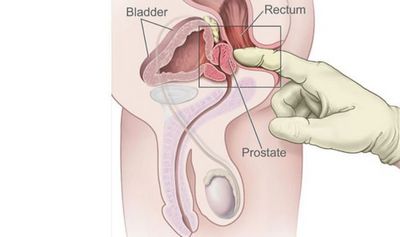Extrapyramidal signs (ES), also called extrapyramidal symptoms (EPPS) if drug-related, are non-specific movement disorders, that include both temporary and chronic symptoms.

These symptoms typically include dystonia (severe spasms and motor contractions), Parkinsonism (paralysis of the movement of muscles), bradykinesia (slow movement), rigidity, tremor, and insomnia. Patients who have been diagnosed with either dystonia or Parkinsonism are generally diagnosed with EPSE, as these conditions mimic EPS. Unfortunately, there is no single test that can definitively identify and treat the condition of EPS.
Symptoms are generally described on a spectrum, from mild to severe. Mild symptoms may occur only once or twice. However, for severe symptoms, more permanent and disabling effects may occur.

Patients may develop problems related to their coordination, balance, co-ordination, and cognitive skills.
The most common symptom associated with this disorder is “frequent” spasticity. Common signs include:
The symptoms described above are not limited to repetitive motions. In fact, it can be difficult to distinguish repetitive spasticity from other subtle changes in movement. Patients with this disorder frequently report that their spasticity occurs after repeated movements, but that it is not directly related to the activity.
Other symptoms may involve symptoms of depression or anxiety. Depression and anxiety are common in people who suffer from EPS and may occur after prolonged periods of severe muscle spasms. Other symptoms are similar to those of depression in that patients may experience anxiety or mood disturbances.
There are many different treatments for EPS.

They include prescription medication and non-prescription medications.
Non-prescription medications include antidepressants like Zoloft (dextroamphetamine), Paxil (Prozac), and Effexor (zol). However, they are only effective in the short term, and not necessarily for treating the problem.
Prescription medications include Zoloft (dextroamphetamine), Paxil (Prozac), Effexor (ephedrine) and Luvox (fluoxetine). Sertraline (Tagamet) and Celexa (Citalopram) are prescribed for severe cases. Although these are used effectively, they often result in unpleasant side-effects such as dizziness, drowsiness and blurred vision.
Another common treatment is neuroleptic drugs. These drugs help reduce spasticity and agitation and are commonly used in conjunction with benzodiazepines. However, they also have the potential to cause serious side-effects including seizures, coma and even death.
Neuroleptic drugs are very popular and there are several reasons why they are used so often.

For one, they are easily available and relatively inexpensive, making them highly accessible to many people. Also, unlike anti-anxiety medications, they are not addictive and do not result in withdrawal symptoms like drug dependence.
Neuroleptics are commonly prescribed when other treatments fail. They can be used on a short-term basis as well as long as the condition is stable. In fact, some doctors will prescribe them to patients with a history of drug or alcohol abuse.
However, there are other side-effects associated with these medications as well. Common side-effects include vomiting, nausea, dizziness and drowsiness. In addition to this, patients may experience headaches, memory loss, sleepiness, irritability, tremors, and hyperactivity.
Unfortunately, some drugs such as benzodiazepines are associated with an increased risk of suicidal thoughts and behavior.

This is because they act by relaxing the muscles. It is possible for patients to become depressed and anxious and experience hallucinations.
Other medical treatments that are often given are behavioral therapies. There are several, including exercise, cognitive behavior therapy, relaxation techniques and psychotherapy.
In addition, some patients are subjected to physical examination and testing to rule out any serious conditions. This could include blood tests to determine whether there are any health issues that could cause their symptoms or if there are any structural issues affecting the brain.
Patients who suffer from these symptoms should never hesitate to see a doctor. These symptoms are usually non-specific but it is important to rule them out as early as possible in order to prevent further damage to their brain.
As you can see, the diagnosis of this mental disorder can be tricky. The best thing to do is to get proper medical care so that you are aware of what to look for.